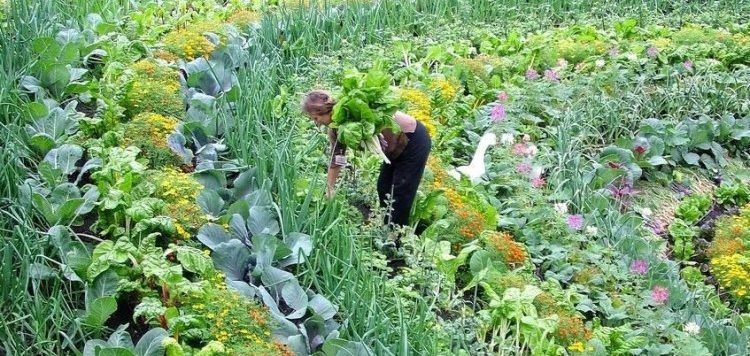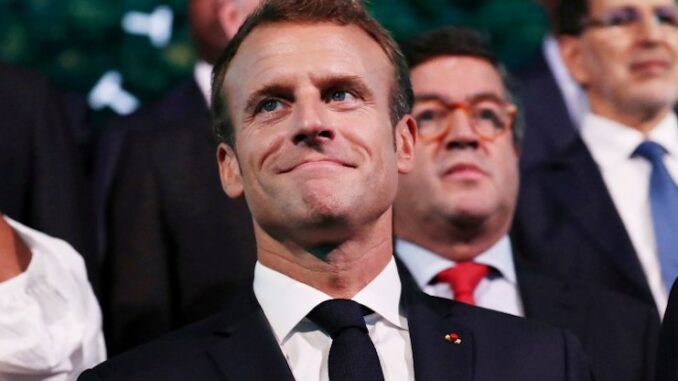
Threading the Needle Part I.
Saving nature without sacrificing modern life is the preeminent challenge of our time. Here’s how we do it.
Saving nature without sacrificing modern life is the preeminent challenge of our time. It is a complicated problem that must be attacked simultaneously from multiple angles. Failure to act on one angle will invalidate efforts on other angles.
This problem must be addressed in two distinct phases. First, we must stop living in a manner that actively harms both ourselves and the natural world. Then we must learn how to create a world where both nature and humanity thrive. This two-part article will explore how we can reorganize our civilization to be compatible with such a vision.
Part II can be found here.
Part I: First, Do No Harm
It is necessary to begin first with the practice of harm reduction. Before we can heal our relationship with nature, we must first stop actively harming it. Any serious effort to preserve the natural world must transform the agricultural system, economic system, and cultural attitudes that presently threaten it. Anything short of this will result in a heavily degraded world left behind for future generations.
Agriculture is by far the largest human enterprise on the planet by land area. It is also a leading contributing factor to global biodiversity loss, oceanic dead zones, nitrous-oxide and methane emissions, deforestation, soil degradation, and chemical pollutants such as pesticides. To confront this, we must address both how we produce our food and what foods we consume.
The single quickest way to dramatically and positively transform the agricultural system would be a widespread adoption of plant-based diets. It is difficult to overstate the importance of this. An overwhelming 67% of arable land in the United States grows feed explicitly for livestock.
Globally, animal agriculture is the leading cause of deforestation. This is especially concerning at the global level, because as nations become wealthier, they consume more calories from animal products, and most of the world’s arable land is already cultivated.
By dramatically reducing our consumption of animal products, we can reduce the land needed for agriculture and its associated environmental impact. Following this, we can take further steps to reduce the footprint of agriculture such as cutting food waste, recycling nutrients from our waste streams, and transitioning from traditional outdoor farming to vertical indoor farming. To the extent that it is possible, we could move our agricultural center to be within our urban centers, freeing up additional land, reducing dependence on variable natural cycles, and allowing for the integration of urban organic waste with vertical farms. This would have the added benefit of dramatically reducing the need for fertilizers and pesticides and the deleterious effects of their application and overuse.
The combined result of these changes would dramatically increase the efficiency of our food system and shrink the footprint of required arable land to feed a growing global population. What we do with the land that is freed from intensive agriculture is up to us.
Resource extraction is necessary for us to enjoy the benefits of modern life, but we cannot continue to wantonly destroy the environment to procure its wealth. Alongside changes to the way we produce and consume food, we must change the way we consume, produce, and distribute resources and wealth, and manage our perceptions of what it means to lead a good life.
We can start by dramatically curtailing our consumption habits. This could be achieved through legislation that restricts purchases of resource-intensive goods such as personal vehicles and electronics. Alongside this, we could mandate that all consumer goods be built for reliability and longevity, be easily repairable, and be easy to recycle at the manufacturer’s expense.
Further reductions in the need for commodities could be achieved through sharing economies, where communities share tools and resources, similar to libraries with books, as opposed to strictly individual ownership.
Parallel to the reduction of resource extraction, we can and should innovate less harmful ways to extract resources from the earth. The cost of extracting resources, including environmental degradation and human hardship, should be fully reflected in consumer products.
This would also have the side effect of increasing the economic incentive to recycle materials from our waste stream. Many raw materials and consumer goods are imported at present. Integral to the success of these policies would be tariffs or other restrictions that prevent corporations from outsourcing pollution and human suffering for cheaper products.
The lowest cost way to reduce consumption would be to re-envision our notions of wealth beyond strictly material measures and develop economic metrics that measure welfare rather than “growth.” One vision for what a post-growth economy might look like in practice is “Doughnut Economics.”
In this model, societal well-being is measured through several metrics with a floor and a ceiling. The floor represents a basic standard of living inclusive of income, education, resilience, voice, jobs, energy, social equity, gender equality, health, and access to food and clean water. The ceiling represents certain planetary boundaries such as climate change, freshwater use, the nitrogen and phosphorus cycle, ocean acidification, chemical pollution, atmospheric aerosol loading, ozone depletion, biodiversity loss, and land use changes.
These changes, if enacted, could create an economy that delivers a high standard of living without sacrificing the planet in the process. Perhaps in the process, we could find greater satisfaction with our lives as well.
Transforming the dominant culture is far harder than transforming the economy as it is less tangible, though it is no less important. The prevailing culture encourages the cynical exploitation of the vulnerable by the strong and places people into a struggle for dominance over each other. Ultimately, most of our major social and environmental crises all stem from these toxic attitudes entrenched in our culture.
We evolved as a collaborative species that is most successful when living in groups. That our culture endorses extreme individualism is fundamentally a denial of what it means to be human, backed up by millennia of human evolution in groups.
These entrenched attitudes have pushed us to a point of existential crisis, both literal and figurative. The dominant cultural framework is fundamentally incapable of solving the problems that we face, as it is what created the problems in the first place.
The solution to this is to radically transform our culture into one that embraces vulnerability, solidarity, and the work to dismantle oppressive institutions. This may not prevent states from failing, mass migration as cities flood, crop failures, or species extinctions, but it will create a kinder, gentler, and more resilient world to live in. By changing the way we think about our world and each other, we stand a better chance of solving the most difficult challenges of our time.
Bringing it All Together:
Achieving the transformation of just one of these three systems would be revolutionary. Achieving the transformation of all three would be a change like no other in human history.
Perhaps the closest analogue would be when humans adopted agriculture and first started settling in cities. And yet, we are at a time unlike any other in history. The challenge of our times necessitates that we act quickly, boldly, and across multiple dimensions.
We must work within the institutions that are available to us at any given time. The world is not a blank slate for us to write on however we see fit.
Rather, like evolution through natural selection, we must make do with what we have, seize opportunities as they become available, and modify existing structures to suit our needs. Similar to evolution, change can happen very rapidly when conditions become favorable or unfavorable to one group over another.
One step that could help put us on a path towards the transformation of our systems is to grant personhood to land. New Zealand has been a pioneer in granting personhood to non-traditional entities. In 2013, personhood was granted to Te Urewera national park. The Whanganui River and subsequently Mount Taranaki were granted personhood in 2017.
Similar to how we do not tolerate abuses for people or certain animals, land ownership (or perhaps more accurately, guardianship) would be denied to those who abuse, exploit, or otherwise mismanage it. Any act of harm to the land would be legally treated in the same manner as acts of harm to a person. This is fundamentally at odds with certain beliefs about private property in our culture, but we can no longer afford to view land as property for one to do with as they please.
These protections would require a minimum standard of stewardship that would balance conservation, food production, and resource extraction. In many ways, we already have models for this through the Forest Service and Park Service. However, privately owned land is not afforded the same protection, and protections for public land are often not enforced.
In the present framework, landowners might be fined for certain forms of mismanagement, but suffer no risk of losing their property. There must be real consequences for the misuse and mismanagement (and benefits for responsible stewardship) of land if we are to change our relationship with it.
The ramifications of this would be nothing short of transformative for all three of the aforementioned dimensions of society: agriculture, economics, and culture.
For agriculture, it would make sense to do away with environmentally destructive methods of food production. Livestock grazing would rank near the top, as it contributes to increased methane emissions, soil erosion and degradation, increased suspended sediments in rivers, manure pollution, water scarcity due to irrigation for supplemental feed crops, and the spread of invasive species such as cheatgrass.
As much as 41% of land in the contiguous US is used for ranching and pastoral agriculture. This is an enormous amount of land that could be restored for conservation value, spanning a wide variety of habitats across the US.
For economics, this could radically transform how and where we extract and manage resources, and how we handle land that has been degraded due to resource extraction. Certain highly destructive forms of resource extraction could be permanently discontinued, such as clear-cutting of forests, mountaintop removal for coal extraction, and hydraulic fracturing for natural gas.
Alternative, less harmful methods of resource extraction could become favored over their destructive counterparts, such as hemp farming for textiles and paper products, third-generation biofuels for liquid fuel alternatives, or green-mining techniques for metal extraction.
Culturally, giving land legal personhood could lead to long term changes in public perception of our place in the landscape from one of taking to one that is more fundamentally rooted in reciprocity. As one cannot own a person, land ownership as a concept would be challenged to its core. This could establish a system of “the commons” where land is not owned by individuals but is collectively shared; the closest analogue we have for this presently is our public lands.
As persons have legal rights, protections, and the ability to bring action in court, one could realistically consider the public bringing forward charges on its behalf. The most egregious acts of systematic harm to the environment could be brought up as “crimes against the environment” and “ecocide” in a parallel manner to “crimes against humanity” and genocide.
Such changes would be nothing short of revolutionary, and yet our times call for bold and visionary thinking. The time to act is now or never.
Related posts:
Views: 0
 RSS Feed
RSS Feed

















 November 15th, 2020
November 15th, 2020  Awake Goy
Awake Goy 



 Posted in
Posted in  Tags:
Tags: 
















